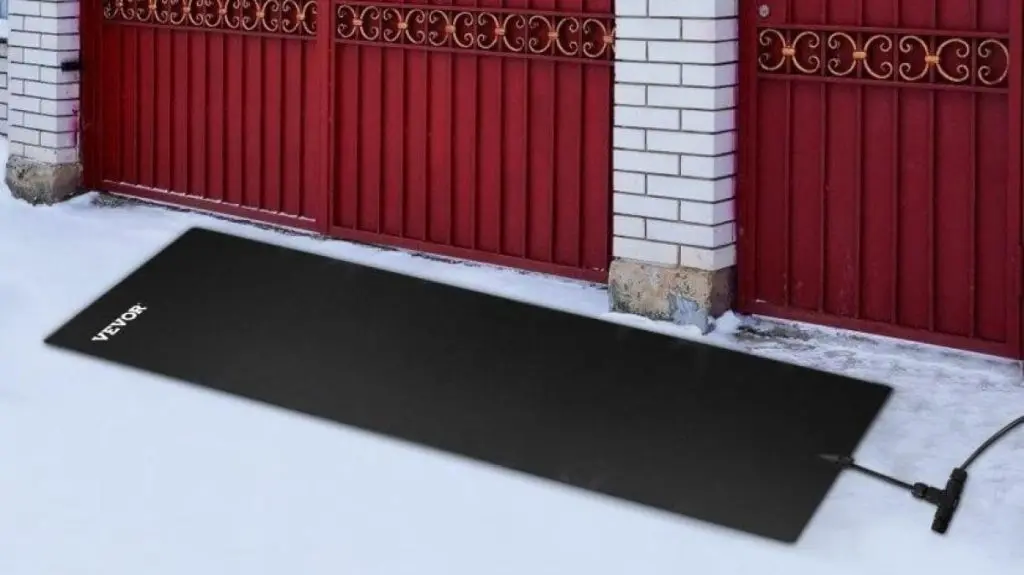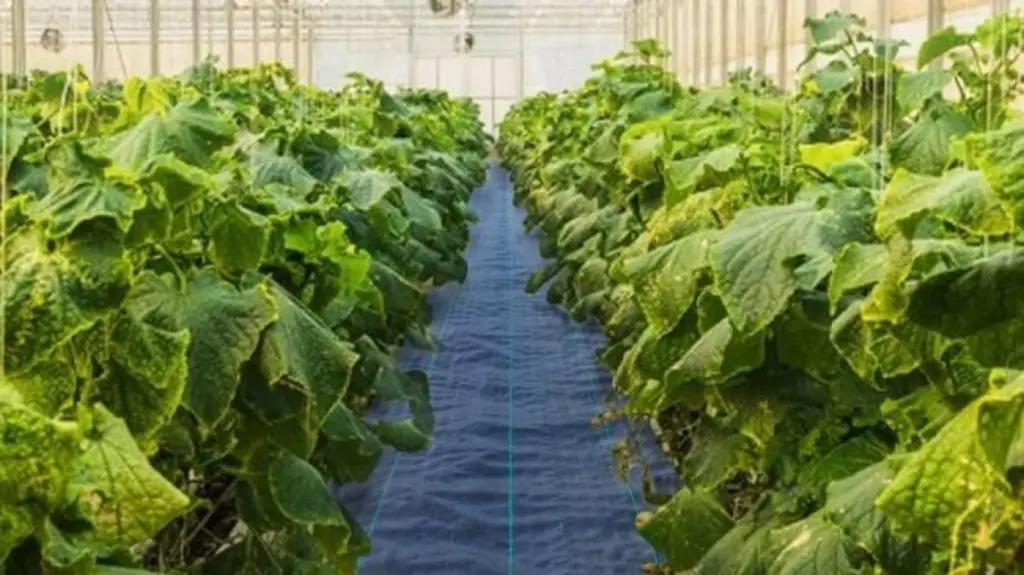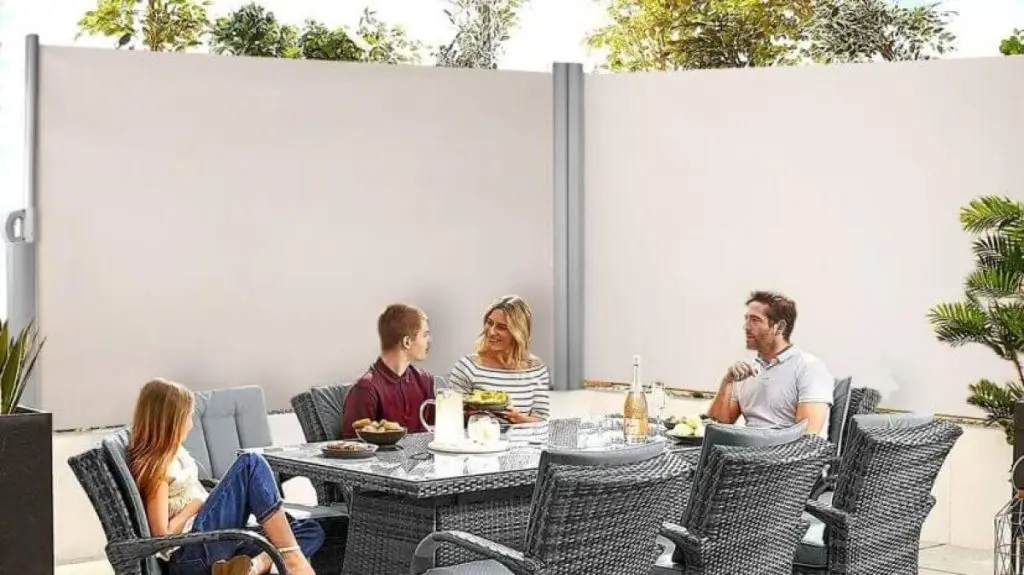What is Geogrid? You have yet to hear about their various uses in civil engineering fields. But nowadays, geogrids are becoming indispensable tools in the construction and landscaping realms, enhancing productivity and cost-effectiveness. Due to a variety of benefits, these materials strengthen structural stability to minimize environmental impact, which makes them a vital part of industrial fields.
With VEVOR’s high-quality geogrid, you ensure durability and are environmentally friendly with its ultrasonically welded quality. Let’s dive into the ultimate geogrids type, quality, and uses to learn more about it.
Table of contents
Understanding Geogrids: A Comprehensive Overview
If you’re looking to know what geogrid is used for, stick to this guide. Because from learning the basic understanding to its types this guide will help you in learning a very cost-effective solutions. Furthermore, you’ll be able to invest in the best geogrid of your choice.
Due to their geosynthetic materials, these reinforce soil and other materials. So they transfer forces to a larger area of soil. This is the common question that arises in every mind: what is a geogrid made up of… commonly they’re made up of polymer stuff such as PVC, polypropylene, and polyethene. Typically, they’re made by weaving pieces of fabric into yarn, heating strips, stretching them into a grid, and lastly, punching holes in sheets.
What are Geogrid’s three main applications:
- Firming up soft ground spaces
- Extend the pavement life
- For a given service life, reduce unpaved and paved road cross-sections for specific service life.
Moreover, geogrids reduce pavement cracking caused by expanding subgrade soil. Geogrids interlock with soil and granular materials. The geogrid’s open apertures provide room for the material confinement, enhancing the shear strength.
What is Geogrid Types
Geogris are classified into four categories: uniaxial, triaxial, biaxial and geotextile geogrid composites. Geometric and functional specifications are broadly developed for specific construction purposes.
Unitized geogrids: They’re ideal for slope and wall applications such as reinforced walls, liners for landfills, soft soil embankments, and steep earth slopes.
Textile-like geogrids: These grids have been thoroughly tested in laboratory and field testing and are capable of paving methods. These geogrids are necessary where flexibility is required, such as overlays for pavement, soil stabilization, and erosion control.
Bonded geogrids: They’re best for roadbed foundations, truck railroad beds, unpaved surfaces, runways of airports, haul roads construction, platforms over weak soil, and parking garages.
Geogrid geotextil composite: These are ideal for deployment. Filtering subgrade soil underneath prevents granular fill contamination.
Depending on the requirements, each grid offers vast advantages and provides versatile solutions for engineers and contractors to boost the effectiveness and durability of construction projects.
Geogrid Applications: Where and How It’s Used
There are various uses of geogrids, from use in construction companies to mining and environmental engineering:
1. What Is Geogrid Used For In Construction and Infrastructure
Geogrids are widely used in construction and infrastructure projects, especially road development, retaining walls, and airport runways. Still, many people wonder what is geogrid purpose in road construction and need help to take advantage of this incredible product. Geogrids not only strengthen the payment layers but also prolong the road lifespan while reducing maintenance needs. They’re usually positioned between the base and subgrade layers, ensuring even distribution of loads, reducing rutting, and preventing cracking. Geogrids withstand heavy traffic loads without stressing by enhancing pavement structural integrity.
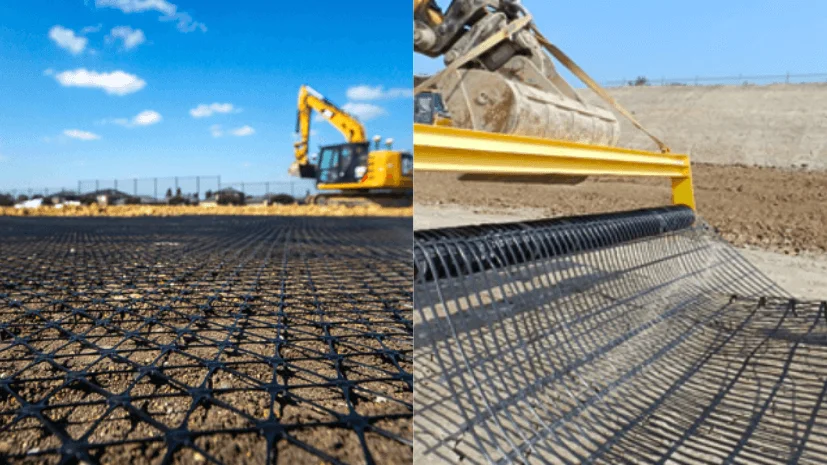
By providing crucial reinforcement, geogrids strengthen the soil mass between retaining walls. With the use of backfill material incorporating layers of geogrids, retaining walls can easily handle earth pressure and prevent potential failure due to soil movement. This reinforcement boosts the durability and stability of structures, allowing them to maintain their shape and performance while reducing maintenance.
Geogrids play a vital role in airport runway development. Due to heavy traffic and loads, it cause them to deform and crack with time. However, incorporating geogrids within the pavement structure of the runway increases its strength and endurance, resulting in rutting, surface distress, and damage to the pavement. Air travel efficiency and enhancement are not only benefits from geogrids but also cost-effectiveness due to maintenance and help in the longevity of runway infrastructure.
2. What is the Geogrid Used for In Environmental and Disaster Management?
Geogrids are helpful in environmental restoration and natural disaster relief through their effective solution for soil stabilizing, controlling erosion, reduce disaster impacts on the ecosystem and landscape. Rehabilitation of degraded areas, such as eroded slopes, destroyed wetlands, and abandoned mines, usually requires geogrids. Geogrids help in the restoration of natural habitats by strengthening soil structure and promoting vegetation growth. By this, further erosion can be prevented, and ecological diversity can be encouraged. Furthermore, geogrids stabilize slopes by combining erosion barrier blankets and matting; they work as a shield for stream banks and promote vegetation growth, enhancing ecosystem resilience.
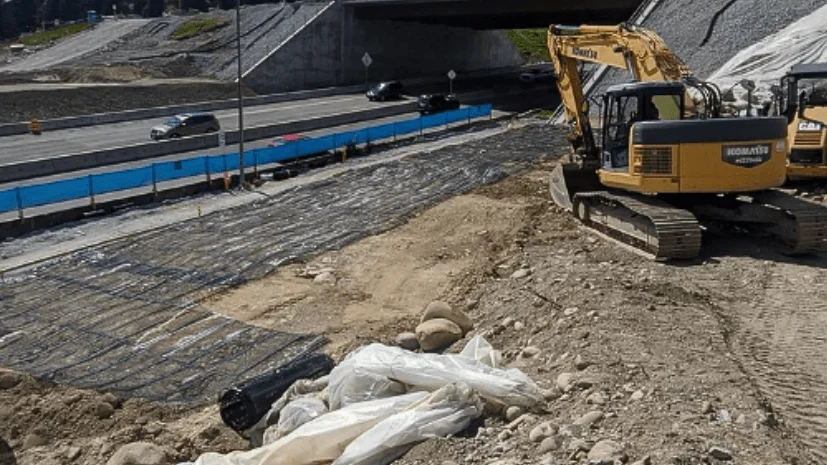
Geogrids offer valuable solutions for recovery and disaster management, like floods, wildfires, and landslides. You can achieve erosion control, road safety, and slope stabilization. Moreover, geogrids are reliable in post-disaster recovery, repairing infrastructure, reconstructing landscapes, and reducing disaster risks.
3. What is Geogrid Used for in Innovative and Specialized Applications?
Multiple geogrid uses are found in different fields, including mining and composite of geogrid-geotextile composites. With these applications, geogrid provides solutions in a variety of industries with their adaptability and versatility.
| Minning Geogrids | Geogrid-geotextile Composite |
| 1. Minning geogrids are used for strengthening slopes, tailings, walls, and dams. 2. In mining operations, large amounts of geogrids are excavated to develop steep slopes. 3. Through providing structural strengthening, geogrids prevent slope failure and improve overall stability. 4. They’re used in mining to increase the stability of haul roads cut maintenance costs of haul roads and cut maintenance costs. 5. Due to their high tensile capabilities and durability, geogrids are well-suited to mining environments. | 1. Geogrid-geotextile composite serves as a separator and filler. These composites are used as reinforcement. 2.The geotextile component regulates soil moisture and ensures drainage, whereas the geogrid ensures the necessary reinforcement. 3. They are used to stabilize soil and filtration, such as the foundation of bridges and flood control structures. |
The Working Principle of Geogrids
What is the geogrid working operation? Geogrids provide load distribution and soil stability by reinforcing and stabilizing soil structures. These functionalities can be achieved in various ways.
Interlocking and Constructivity: Geogrids have holes and openings that provide soil particles to attach to them. After placing within a soil mass, geogrid keeps soil particles from shifting laterally and provides more excellent resistance to shear. Due to this, the displacement of soil is reduced and improves the overall stability.
Advantages of Using Geogrids
- The advantages of geogrids are as follows when they’re used for soil reinforcement and ground stabilization.
- On unpaved roadways, without sacrificing performance, the pavement thickness can be reduced by up to 50%.
- By reducing the annual maintenance budget, you can increase the road’s life and pavements, including asphalt course replacement, by more than 50%.
- Stabilizing slopes and improving soil strength to enhance load capacity and seismic durability.
- It also improves bearing capacity on railways and protects from rail ballast and railway bed, improving performance by reducing rail ballast displacement. A railway lifetime requires less maintenance, and only 30% of foundation material is needed. On poured concrete, load transfer, and working platforms can be developed when the soil is soft, minimizing settlement.
VEVOR Geo Grid: An Industry Leader
With HDPE material, the VEVOR geogrid is environmentally friendly and high-tensile, and it is ultrasonically welded to enhance durability. The 9X17 FT ground grid has a cell size of 9.6 x 8.3 in height.
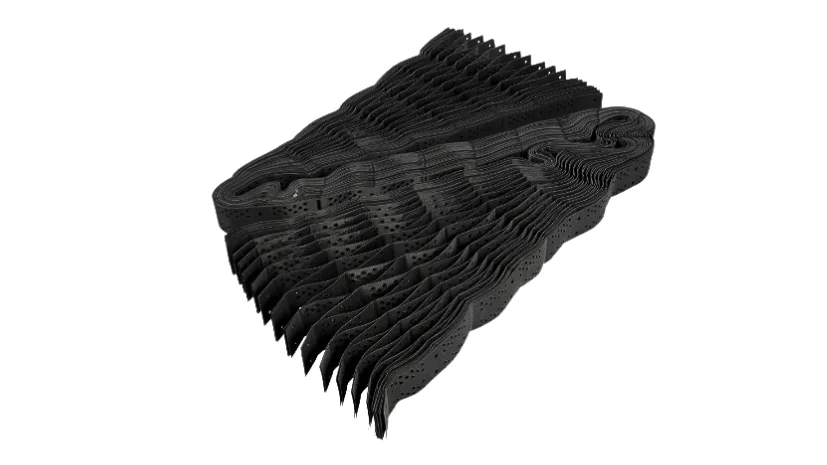
These units are easy to use and cut. If not in use, you can easily expand and store the geogrid anywhere for later use. The stabilizing grid can withstand up to 1885 pounds per sq inch when filled. It can be used for many grounded works like patios, driveways, parking areas, slopes, walking paths, and flat areas.
The quality, prices, brand reputation, and trustworthiness are the only things that should be looked at when buying a geogrid. Compared with other brands, VEVOR Geogrid stands out in the market due to its durability and high performance, with millions of positive responses all over the world. This geogrid is not only easy to use but also provides easy access to storage and instant solutions regarding any query or problem.
FAQs about Geogrid
1. What Are the Different Types of Geogrids?
Geogrids are available in four types: biaxial, uniaxial, triaxial, and geogrid-geotextile composites. For different construction applications, each of them is designed with unique geometrical and structural characteristics.
2. What Are the Key Benefits of Using Geogrids?
Geogrid offers stabilization, reinforcement, and filtration when used with appropriate sizes of aggregate. They’re made up of polymers such as polyethene, polyester, and polypropylene. In engineering applications, their use can be widely seen.
3. How Do I Choose the Right Type of Geogrid for My Project?
Always look for brand reputation, size, quality, and cost to protect yourself from any further loss and regrets.
4. What are the geogrid objectives?
Geogrids are highly used as reinforcement to improve soil strength or other materials. Geo pipes are underground pipes that are thin and geometrically shaped and used for drainage.
Conclusion
Through this ultimate guide, there’s undoubtedly clarity about what the geogrid is and what is geogrid used for. Geogrids are made up of versatile materials with a wide range of applications in development, infrastructure, disaster management, and environmental restoration. The geogrids help strengthen the road, retaining walls, and airport runways while extending the structure’s lifespan. A geogrid controls erosion and assists environmental habitat restoration while stabilizing the soil. Furthermore, geogrids play a vital role in lessening the risk of natural disasters through infrastructure protection and facilitating recovery.
You’re not investing in a product by opting for VEVOR geogrid but also get peace of mind. With its exceptional tensile strength, robustness, and resistance to environmental factors, the VEVOR geo grid offers reliable reinforcement that can withstand harsh conditions. So why settle for less? Consider VEVOR Geogrid for your construction and landscaping requirements needs for a firsthand experience. By choosing VEVOR, you can be assured your project will deliver lifetime value and performance.


